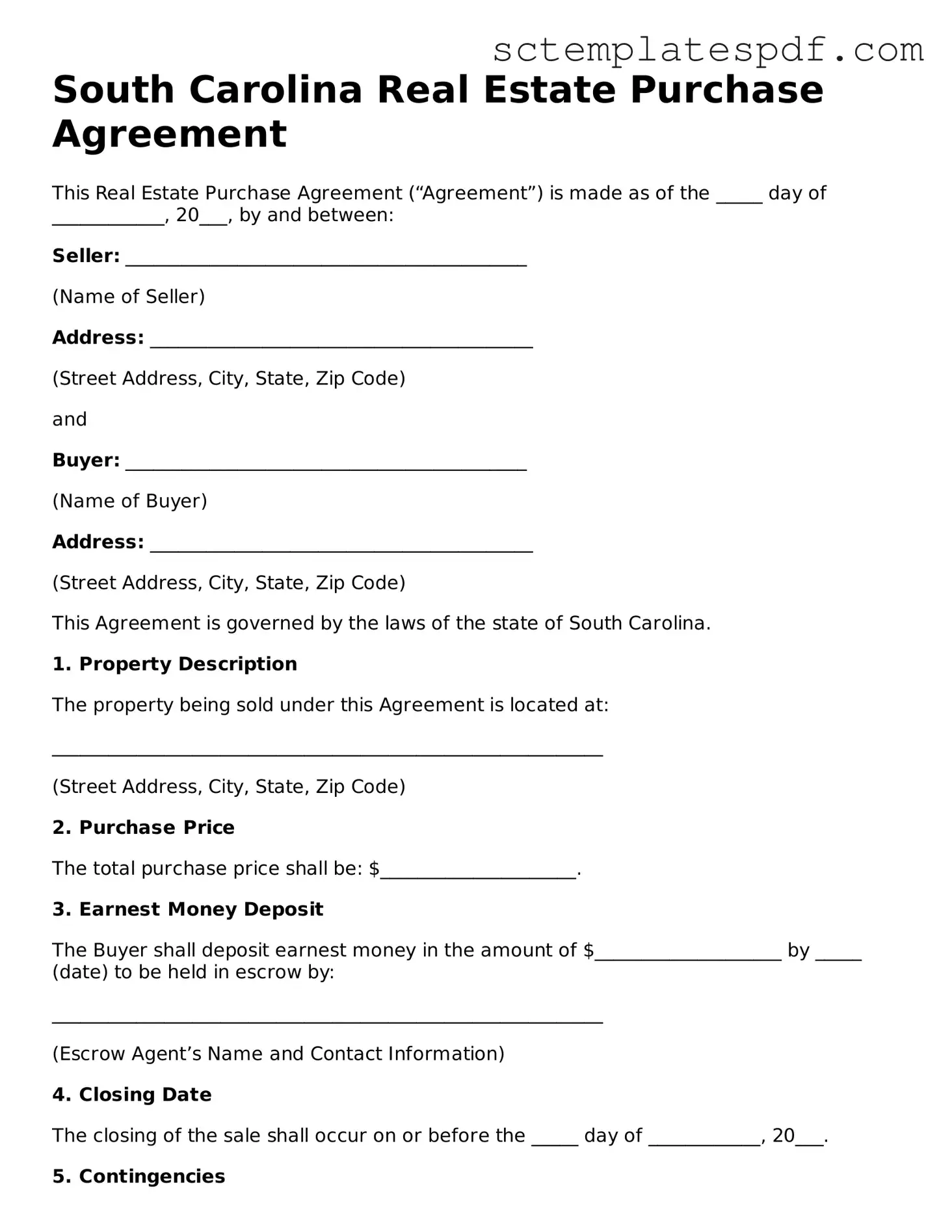Valid South Carolina Real Estate Purchase Agreement Document
The South Carolina Real Estate Purchase Agreement is a legally binding document that outlines the terms and conditions under which a buyer agrees to purchase property from a seller. This form serves as a critical component in the real estate transaction process, detailing essential elements such as purchase price, financing, and contingencies. To begin your transaction, consider filling out the form by clicking the button below.
Fill Out Your Real Estate Purchase Agreement
